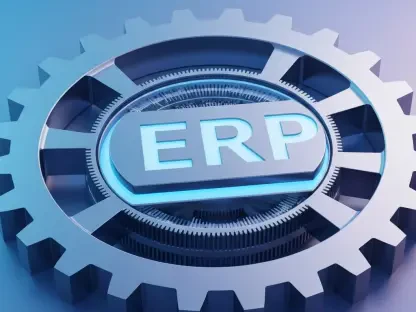The technology industry is undergoing a pivotal transition, especially in high-performance computing (HPC), as it grapples with escalating energy demands and environmental impact. Traditionally known for its substantial power consumption, HPC faces increasing scrutiny to reduce its ecological footprint. The advent of cloud computing and GPU innovations presents promising opportunities. This article gathers expert opinions and reviews to assess the practicality and potential of these technologies in creating a greener HPC landscape.
From Power-Hungry to Eco-Friendly: The New Face of HPC
High-performance computing has historically been characterized by its significant energy demands, often utilizing vast resources to deliver exceptional processing speeds. However, the emerging importance of sustainable practices prompts industry leaders to re-evaluate this energy-intensive model. Many argue that reducing HPC’s environmental footprint is not just beneficial but necessary to align with global sustainability goals. Thus, the focus shifts toward integrating transformative solutions, such as cloud infrastructures and GPU advancements, to usher in a new era of eco-friendly HPC.
Revolutionizing Energy Efficiency with Cloud Integration
Optimizing Resource Allocation in Cloud Solutions
Cloud computing emerges as a critical player in reducing energy consumption through optimized resource allocation. By efficiently managing workloads, cloud infrastructure minimizes waste and leverages shared resources, significantly lowering energy use. Some HPC implementations have already evidenced these reductions, delivering impressive results in minimized energy footprints. However, this shift toward cloud-based HPC faces challenges, including concerns about security and dependency, warranting a cautious yet optimistic approach.
GPU Innovations: Transforming HPC’s Environmental Impact
The role of GPUs, particularly innovations from companies like NVIDIA, marks a substantial leap towards energy-efficient HPC. These advancements reduce both power consumption and processing time, offering a dual-benefit scenario. Numerous case studies illustrate how GPU acceleration minimizes energy usage without sacrificing performance. Despite these promising developments, the rapid pace of technological evolution introduces certain risks, necessitating careful consideration of long-term implications and sustainability.
Redefining Performance Beyond Speed
Traditionally dominated by speed metrics, the evaluation of HPC is witnessing a shift towards sustainability. New performance benchmarks, emphasizing energy efficiency, are gaining traction. A notable trend is the integration of AI-driven optimizations to enhance efficiency, redefining the landscape. These advancements challenge entrenched perceptions that prioritize speed over environmental concerns, indicating a paradigm shift towards holistic performance measures.
Merging Technology with Ecology
There is an increasing recognition of the complementary nature of technological advancements and environmental goals. Experts highlight how the integration of environment-conscious strategies within HPC can significantly contribute to achieving sustainability objectives. International initiatives serve as case studies, offering valuable insights into the successes and obstacles encountered in their execution, demonstrating that environmental considerations can be a driving force in technological innovation.
Practical Pathways to a Sustainable HPC Future
The pathway to green HPC is paved with strategic integration of advanced technologies and consistent practice improvements. Companies are encouraged to embrace cloud solutions, leverage GPU advancements, and redefine performance metrics focusing on sustainability. For businesses seeking to adopt energy-efficient HPC, these strategies, alongside industry best practices, offer actionable steps to address energy consumption and enhance their environmental stewardship.
Envisioning a Greener HPC Horizon
The movement toward integrating eco-friendly technologies within HPC continues to gain momentum, with implications for numerous industries dependent on these computing solutions. By actively pursuing innovations that prioritize sustainability, the technological sector is poised to not only reduce its environmental impact but also drive forward-thinking solutions that align with global ecological goals. As the landscape evolves, ongoing collaboration and innovation will be essential to fully realize energy efficiency in HPC’s future.









